► CAR’s review of new Forza Motorsport game
► Small gameplay changes, but familiar to play
► Available on Xbox and PC on 10 October
I’ll say this right now: I’ve played every single Forza-branded game in its history, starting with the original Forza Motorsport back in 2005 and including every open-world Horizon title.
And I know I’m not the only one. Forza has, over the last 20-ish years, become just as important to us car enthusiast gamers as Gran Turismo and Need for Speed. So, naturally, it’s a big deal when a new one rolls around. The new Forza Motorsport (which, this time, does without a sequel number) is the first one to really harness the power of Microsoft’s current Series S and X consoles, as well as on PC.
The team at Turn 10 and Microsoft Game Studios have introduced some new formats and features to its long-running racer for this new generation, so keep reading for our full review.
Eye of the storm
There are three graphics modes presented to you when you start: Performance, Performance RT and Visuals. Performance is considered an all-rounder; it runs in 4K and at 60 frames per second on console but does without any ray tracing. Performance RT is (believe it or not) just Performance Mode but with car-based ray tracing. Visuals drops the frame rate to 30 frames a second but includes ray tracing on the car models and the tracks around it. I settled for Performance RT after testing all three.
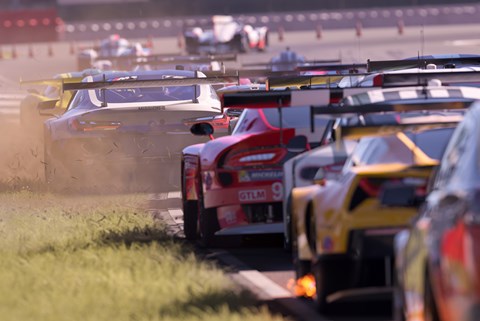
Overall, the depth of the world around you and the cars you’re driving oddly depends on the weather. On a starkly sunny day, your car and the environment around you can feel quite flat, where even brightly coloured cars don’t really seem to pop on screen. That said, dust and damage come through with serious detail; if you’ve veered off track at Laguna Seca, for example, a thin layer of dust builds up on the windows that can be seen while racing in cockpit view.
Ditto in places like Forza’s Autovista where you can walk around you car (or prospective ones you’re going to buy) – the cars look washed out and sometimes uninspiring. Especially when some of the activities you used to be able to do in Autovista (like start the engine, change the colour ad hoc, get on-the-fly performance specs etc.) have all been removed or pared right back.
That said, there are still some sweet details. A renewed focus on fuel (which we’ll get onto soon) shows reactive fuel meters, and mileometers on certain cars will clock all miles driven in them across different races – something we noticed when we bought a Mercedes-AMG E63 S to compete in a race series. Simple, yes, but a neat touch.
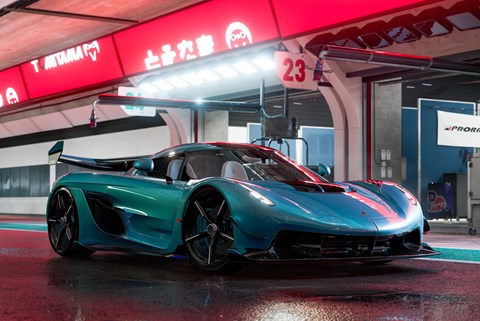
But all of that claimed graphical prowess starts to show itself when the weather turns ugly or when the sun goes down on track. One of Forza Motorsport’s latest features is a properly dynamic weather system and day/night cycle, where races can shift from being at dusk to completely in the dark, or you can experience a full sunrise, for example. And the depth of contrast and colour that brings to the table makes up for the sometimes drab-looking broad daylight races. Light bounces off surfaces at night and colours seem to deepen while you’re racing at night.
And bad weather days add in some interesting obstacles. In the wet, the new weather system has done wonders for on-track driving; when it rained in previous Forza Motorsport games, you’d either feel like it was still a dry track or risk aquaplaning driving through a puddle. Here, it’s much more balanced: there’s a tangible loss of traction but it doesn’t make wet races feel impossible. And during a haze of fog, it’s not just a general haze that lowers visibility – there are actual clumps of thick mist that can temporarily obscure your view immediately in front of you. All of these effects make racing in less-than-perfect light or visibility infinitely more interesting to play than before.
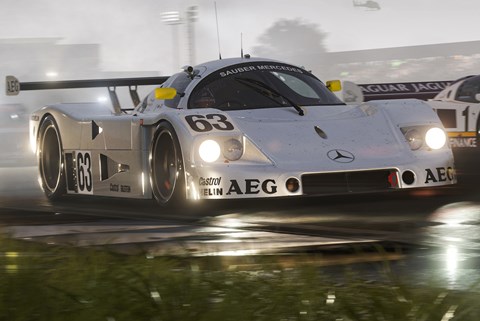
Speakers up
This is an area Forza’s really upped its game. Recent titles from both the Motorsport and Horizon series have been criticised for old, outdated or just plain wrong engine sounds for some of its cars, but that’s been much improved. Pretty much all cars driven so far sound accurate.
As well as the cars themselves sounding better, the entire soundscape has definitely improved. Screaming engines echo and bounce off grandstands and barriers, turbo chargers can be heard sucking in air and fluttering on lift off and the flecking of stones and dust through wheelarches if you stray off track sounds properly punishing. The screeching of tyres has also been improved: no constant (and irritating) roar like in previous games, but dynamic and reactive screeches that vary in pitch on different surfaces.
Built, not bought
Recent Forza games practically threw cars at you, giving you too many during your single player career to really know what to do with. But in swings Forza Motorsport’s biggest change, which is designed to instil more of a relationship with the cars you use to race. It’s designed to do an about-turn on the idea of throwing money at a car to get it competitive, only to never drive it again once that race series was finished. In fact, the entire idea of collecting cars (seen with a rarity scale in Forza 7, and a sticker book-like process in Horizon 5) has been completely thrown in the bin. You want that gorgeous of-the-moment hypercar or rareified classic? You’ll need to earn the money the old fashioned way.
The career mode is simple enough, consisting of various series of races with a theme in mind: Super Saloons, Premium Performance, Retro Hot Hatches… that sort of thing. You enter a series, buy a car (or use one you already have) and get to work. Wins get you money and XP, with cars only being a reward when you’ve finished an entire tour (which usually comprises at least five or six series).
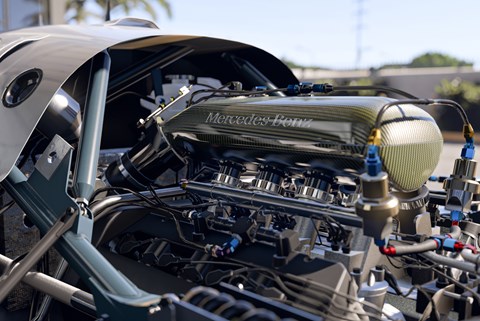
While on track, you earn car experience points (CXP) for overtakes, smooth cornering, best lap or section times, and levelling up provides you with car points to spend on performance upgrades – paltry credits aren’t legal tender any more in the upgrade shop. Certain amounts of CXP cause your car to level up, unlocking more upgrade parts (you only start with the ability to change your air filter and exhaust and little else with a car at Level 1) as you level up your car.
Overall, it’s clever and seems to work. I learned the handling nuances of a Toyota Supra I bought for a race series, and progressed it to the point of it being a properly sorted track weapon by the time the race series was wrapping up. It was satisfying to know that was *my* Supra, not just one that was off the shelf.
Steward’s inquiries
As well as a welcome and tangible upgrade to the personality of the AI drivers in-game (where they can make mistakes, even act aggressively at times), Forza Motorsport has also introduced a couple of small new features while you’re out on track.
First of all, the game forces you into a practice period without any possibility of skipping it (like in Gran Turismo titles, for example), which will be a bit of a Marmite decision for some. The aim is to get you to learn the track and get used to your car on it, and it helps to do so by challenging you to post your best times through certain sections of track that the game think are key to a good lap time (or climbing onto a podium at the end). Before a practice and race you can also manage your fuel level and (if your car is a high enough level) even specific tyre compounds. A noble aim, indeed, but the impatient among us (like myself) will find it frustrating if all we want to do is just get on with the race.
Additional rewards for those who like their racing more challenging (like turning your stability or traction control off, manually shifting, turning the racing line off etc.) have been scrapped, with the developer team saying they don’t want to penalise those who enjoy playing with those assists turned on. Instead, you’re rewarded more than the standard payout for how tough you want the AI to be, whether you play with realistic damage or not, and how high you want to place yourself on the racing grid.

There’s also a much tighter grip on you behaving yourself. The game analyses your behaviour, giving you time penalties for inappropriate corner cutting, running wide off track and, of course, crashing into fellow racers. While the development team acknowledge the system will take a bit of refining which will come with future updates, at present it doesn’t quite rule with real authority. There have been a couple of times I know I would the book thrown at me in real life for an aggressive and rather, er, physical overtake – but the system on more than one occasion has given me a green light and a ‘NO PENALTY’ notice. Hmm.
But these all just feel like minor changes. Being on track and mid-race will be where Forza Motorsport feels its most familiar to returning players, and where the framework is largely the same as it has been for some time. Some of Forza’s quirks of old remain, like the fact we must still suffer arbitrary segments of time when we want to rewind or the disappointingly low-resolution, stretched and warped rear view mirrors when using the cockpit camera. The car list is large, clocking in at 500 at launch, but you can tell from the off that more recently released cars or ones that have been in previous titles but are missing here are being held back to be introduced via future paid-for car packs.
The handling dynamics of the cars generally doesn’t feel like it’s changed all that much over Forza Motorsport 7, either; that’s not necessarily a bad thing – but undetectable handling differences in a game that’s been designed to work on an entirely different generation of console feels like a missed opportunity.
Playing nice
If you think Big Brother watching you in the career wasn’t enough, Forza watches you even more closely when you’re playing online. In fact, when you first start off, you’re shuffled off into qualifier races that give you two scores – one is your ability, and the other is all about safety. You might be a fast qualifier that scores you highly on performance, but leaving destruction in your wake behind you gets you flagged as a risk with a low safety score. Also similar to the single player career is that an online race comprises a practice, qualifying and the race itself. Again, with no option to skip certain parts.
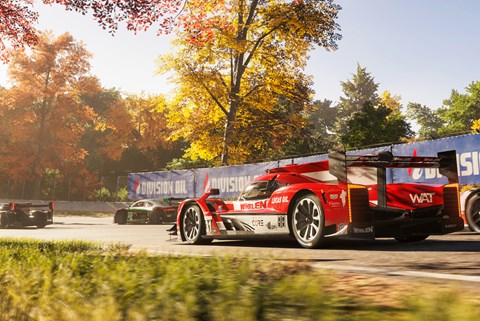
Here, Forza aims to put on regular featured race series for racers, too – helping to keep the game alive over the next couple of years – just as it has done with various events and opportunities in recent titles, too.
Forza Motorsport: verdict
Does Forza’s latest title revolutionise the racing game genre, then? The short answer is: no. For those of us who are fans of the franchise, Forza Motorsport won’t feel like an enormous step forward for racing game-kind. But does that mean it’s a bad game? Absolutely not.
The rewriting of its single player career has injected a bit of welcome novelty into the mix, as has the introduction of some more serious characteristics designed to turn even the most casual of gamer into a serious racer. But, overall, it’s still a familiar member of the Forza Motorsport family: polished, modern and delivers a properly good racing experience for returning fans and new players alike.
Forza Motorsport: Premium Edition
Played on Xbox Series X with a controller
Forza Motorsport launches on 5 October for those who’ve acquired the Premium edition, and launches fully (on Xbox Series S/X, Xbox Game Pass, Xbox One, PC and on Steam) on 10 October
Just so you know, whilst we may receive a commission or other compensation from the links on this website, we never allow this to influence product selections – read why you should trust us